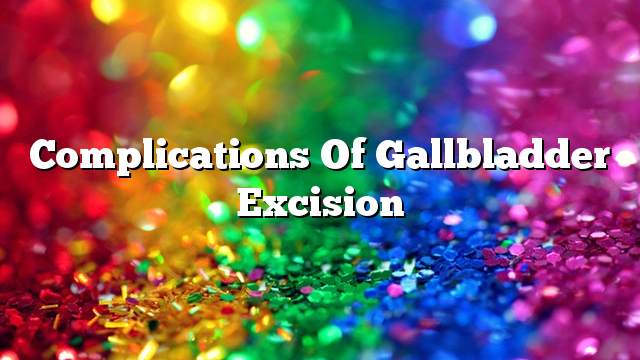Gallbladder
Gallbladder is a small part in the form of a bag located near the stomach, the function of storage of yellow matter, which helps in the process of absorption of fat from the blood, may be dysfunction in the work lead to the stones, or the incidence of gall bladder cancer, and chronic inflammation, and in some cases burst, requiring treatment By using painkillers and antibiotics, or changing diet, or surgically removed, which is the best solution for the treatment of various gallbladder diseases.
Cholecystectomy
The gallbladder is removed if there is a gallstone that causes pain to the patient, which can lead to inflammation of the gall bladder sac due to blockage of the holes in the gravel, requiring medical intervention to avoid serious complications of the patient, such as: accumulation of bacteria, And simple, is done through the introduction of the endoscope and the removal of the gall bladder bag from the body, and can be done through the opening of an opening in the abdomen where the bag is located and completely eradicated.
Post-cholecystectomy syndrome
Post-cholecystectomy syndrome is a group of heterogeneous symptoms that recur and continue after the cholecystectomy, such as upper abdominal pain and indigestion. This syndrome occurs early after or after the gallbladder excision.
Complications after cholecystectomy
- Inflammation, redness, pain, puffiness of the wound and pus discharge; requiring antibiotics to control inflammation.
- An irregularity in the flow and rotation of the yellow, such as leaks yellow juice, and the symptoms of the leakage of abdominal pain, requiring surgical intervention to discharge from the abdomen.
- Bile duct injury.
- Gastrointestinal pain, indigestion, stomach upset, nausea, vomiting, diarrhea, and abdominal distension.
- Survival of gallstones in the bile duct or residues in the common bile duct and pancreatitis.
- Psychological disorders.
- Inadequate narcotics given to the patient prior to the operation of the body.
- The appearance of swelling in the leg, due to the inability of the patient to move after the procedure.
- The patient’s inability to breathe because of the passage of blood clotting from the leg to the lungs, leading to death, so the patient must move after a short period of the procedure, and tell the doctor any complications felt.
- Bleeding in some cases.
- Failure to complete the operation successfully, resulting in damage to other organs of the body.
Diagnosis of post-cholecystectomy syndrome
The diagnosis of the syndrome is through intensive physical examination, ultrasound imaging, CT scan, bile duct imaging, and in some cases a magnetic resonance imaging is required to accurately assess the patient and thus provide appropriate treatment.
The patient is advised to rest after the eradication process, and adhere to a healthy diet rich in food easy to digest, and increase the drinking of fluids, and avoid fatty foods.
